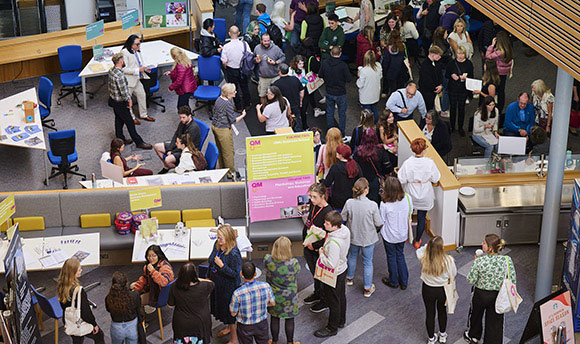QMU Net-Zero Strategy: Pathways
Pathways
The decarbonisation pathways address scopes 1 and 2 emissions independently of scope 3.
The University commissioned consultants to support an appraisal initially of heat decarbonisation in conjunction with proposals to develop the connection to a wider area heat network in 2021. This included examination of alternatives and the scope was expanded to encompass consideration of electrical decarbonisation and the outputs from the options appraisal are incorporated into proposals which will be evaluated by the University below.
Decarbonising Electricity
The carbon intensity of the UK electricity supply is calculated by BEIS. The published (carbon) emission factor for the 2021 reporting year for the UK as a whole was 212 g/CO2e/kWh. The long-run marginal emissions factors based on decarbonisation of the grid are forecasted as 14g/CO2e/kWh by 2040 and 6 g/CO2e/kWh by 2050. These forecasts underpin the assumptions in our options appraisal.
In aligning with Science Based Targets, we will explore the option to purchase of 80% of our electricity from renewable sources by 2025 and 100% by 2030. We will explore implications with the sector procurement bodies and representative groups as part of contract renegotiation and alongside any review of location based or market-based accounting.
Solar Photovoltaics(PV)
The most immediate and deliverable reduction of electrical energy carbon emissions would come from the installation of solar PV which would feed directly into the campus medium voltage electricity network with projected short-term payback periods and thereafter returns which would contribute to meeting other decarbonisation costs. Solar PV generation would also counter the volatility of energy supply prices.
{image}
The ground mounted solar (GMPV) will to be considered in the context of future campus development, would require planning consent and designed to incorporate measures to enhance biodiversity and landscape amenity to offset any loss in green space.
Decarbonising Heat
Heat remains a significant proportion of our energy use equating to 58% of our overall energy use in 2020-21 and therefore the exploration of options which would reduce heat demand and decarbonise this energy use are key in meeting targets. This aligns with the Scottish Government strategy for Heat in Buildings which aims to support the development of at-scale local low carbon heat networks.
The University has the potential to work with partners to develop a network which can leverage existing capacity within locally available residual heat from waste and evaluating the detailed feasibility of a wider area network remains a key consideration of our heat decarbonisation strategy.
Development of a heat network as part of a wider local scheme requires collaborative and partnership working across public and private sectors. The University is engaged with local authority partners and others in building the critical mass which can ensure this could be delivered viably and provide a long-term sustainable solution.
The preferred options for decarbonisation of our heat based on the options appraisal are:
- centralised air source heat pumps at the energy centre
- connection to low temperature district heat network to the energy centre
The option of utilisation of the natural gas network converted to hydrogen as the primary heat energy source has been discounted due to the early and experimental nature of the studies to date, the likely level of costs of supply, intensive energy use in its generation and residual emissions.
While decisions on the longer-term energy pathway remain, the focus from the work carried out to date will now be translated into exploring and implementing local technology solutions and modification at campus and building level which can serve either pathway.
Biomass
As outlined above, in the formation of this net-zero plan, work had been on-going with the support of consultants to review decarbonisation of energy on a holistic campus wide basis.
This included reviewing the basis of retaining the campus heat network as part of the longer-term strategy. Early in process key decisions around the future of the biomass energy plant were required due to the requirement for significant operational repairs, fuel supply quality issues and operational control limitations.
As result of the review, it was agreed by the University Court to mothball the biomass plant and operate the heat network on gas on a medium-term interim basis. With modification and optimisation of gas boilers burners and control systems, energy intensity of the heat network has been reduced and will support transition to lower temperature heat which will be supplied under either of the preferred options above.
This also recognised the level of carbon emissions associated with biomass when aligning with the science-based target approach.
Costs
Our consultants have carried out a high-level assessment of costs associated with the options appraisal.
Implementation of the roof and ground mounted solar PV could deliver energy cost savings which can be recycled into the implementation of subsequent elements without this being impacted by energy demand reduction measures. Implementation costs would be in the order of £1.1m with a potential payback period of under five years.
Detailed costs associated with demand reduction measures will be developed as the technical solutions are advanced, however these are anticipated to be largely cost neutral over a 10–15-year horizon and in many cases aligned with allowances for planned replacement cycles in the long-term maintenance plan.
The most significant element of the overall costs at current rates would be the replacement of the primary heat source for the campus. Dependant on the solutions adopted these are in the range of £3.5 to £6 million.



